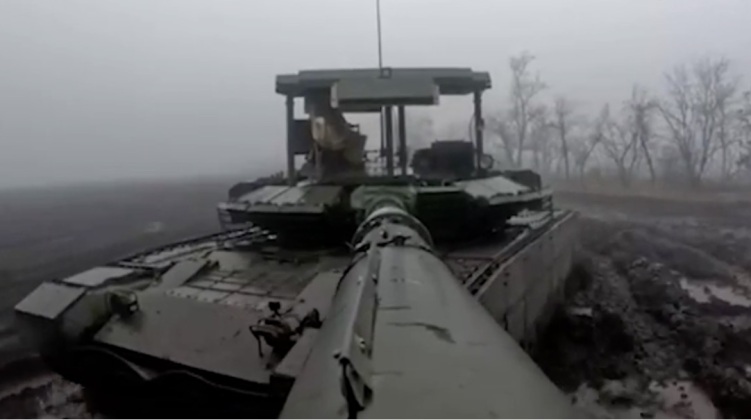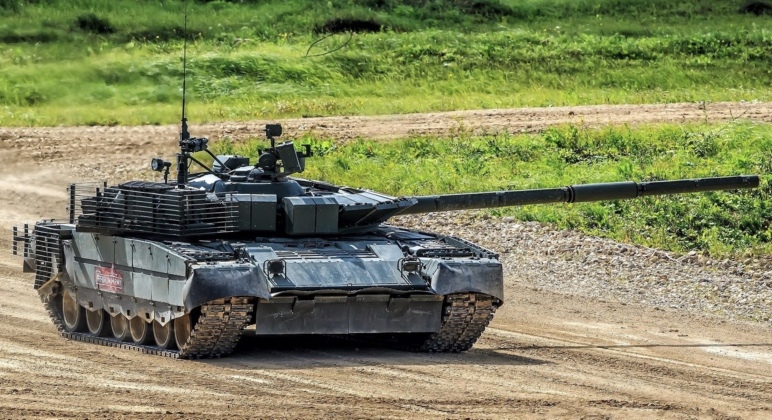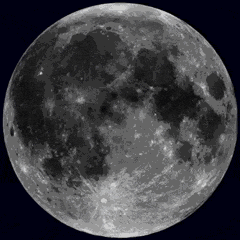Russian state media outlets have revealed that the production of gas turbine engines for the T-80 main battle tank has been resumed at the engineering plant Kaluzhsky Engine – known colloquially as Kaluga. The GTD-1250 multi-fuel gas turbine engine was confirmed to be in full scale production, with this representing the most advanced engine in the GTD-1000 family designed to power the latest T-80 variant the T-80BVM. The engine can run on diesel fuel, kerosene, gasoline, and various blends, which is a prized capability due to the risks of supplies of one or more fuel types becoming unavailable on the frontlines in wartime. The revelation closely coincided with Defence Minister Sergey Shoigu’s visit to the Omsktransmash Tank Plant, which produced T-80 tanks until the mid-1990s and is currently responsible for their refurbishment and modernisation. The facility has refurbished hundreds of T-80s from storage since the outbreak of full scale hostilities between Russian and Ukrainian forces in February 2022, with relatively few Soviet built T-80s having been in service at the time due to the class’ high operational costs compared to the cheaper T-72 and T-90.

The high cost of gas turbine engines means they are used only on the T-80 and the American M1 Abrams tanks, with other tank classes including the T-72 and T-90 using diesel engines which are significantly cheaper both to manufacture and to maintain. This has been a primary factor leading the Russian Defence Ministry to favour the two classes over the T-80 in the post-Cold War years as part of broader efforts to significantly reduce expenditures. Multiple factors have indicated, however, that experience operating the T-80 in the Ukrainian theatre has led the Defence Ministry to revise its prior assessment regarding the class’ cost effectiveness relative to other Russian tanks, with state media announcing in September that work had begun at Omsktransmash to restart T-80 production after close to three decades. This will supplement current production of the T-90M and next generation T-14 tanks at the Uralvagonzavod tank factory. It has raised the significant possibility that a new T-80 heavily enhanced variant will be developed, potentially with features such as an unmanned turret and armoured crew capsule as seen on unrealised prototypes in the 1990s.

With the Russian Army continuing to receive new T-80BVM tanks for use in Ukraine, reports from the frontlines have testified to its high performance. A Russian Army commander engaged in combat with Ukrainian Army units, including German-supplied Leopard tanks, highlighted the class’ excellent mobility relative to the Leopards when interviewed by local media: “The same Leopards are drowning in the mud, they are constantly, constantly drowning. We can observe from drones how they are being taken out [of the mud]. Our vehicle has a gas turbine engine, it is not afraid of mud or slush, it flies over all potholes. This is the difference that allows our tank units to operate in any weather, support infantry and overcome enemy trenches and dugouts without slowing down.” Beyond advantages in mobility, the T-80BVM’s gas turbine engine is also prized for its ability to start quickly in extreme cold, which was a primary argument for keeping the class in service before 2022 due to its value for operations in the Arctic, with diesel engines often taking over half an hour to start in temperatures under minus 20.
